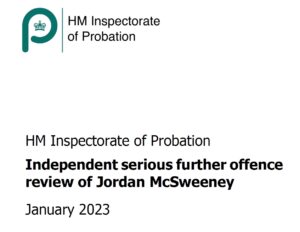Building an effective and resilient Probation Service
The National Audit Office (NAO) has today (24 October 2025) published a new report “Building an effective and resilient Probation Service” which says that the Government must actively manage its plan to boost weak Probation Service performance. The scale of the challenge is evident from two key facts in the report:
- In 2024-25, HMPPS met only 26% of its targets, a drop of 24 percentage points since 2021-22.
- HMPPS has been recruiting more probation staff, but in 2024 found it had underestimated the number of staff required to provide sentence management tasks by around a third (5,400 staff).
Context
Since (re-)unification, the Probation Service has remained under significant strain, with staffing shortfalls, increasing pressures and continuing poor performance. HMPPS has sought to decrease staff workloads by reducing supervision activity and intervention for some lower- and medium-risk offenders (probation Reset) in April 2024, and then again in April 2025 (Impact). However, the Independent Sentencing Review (ISR), published in May 2025, recommends MoJ makes greater use of alternatives to prison to avoid running out of prison places. This will likely increase pressures on probation further. To enable it to cope with increased demand and improve performance, HMPPS has set up a programme to further transform the service.
This NAO report examines why HMPPS has not been able to improve performance of the service to date. It also assesses MoJ and HMPPS’s progress in transforming the service and sets out what more it needs to do to achieve its future aims.
Performance
Available data indicate that the performance of probation services has worsened since unification. HMPPS sets performance metrics and targets, such as timeliness of appointments and delivery of services. HMPPS only met 26% (seven out of 27) of its targets in 2024-25, a 24 percentage point decline from 50% (eight out of 16) since July 2021 to March 2022. Some areas of performance are worse than others. In 2024-25, only 63% of offenders completed their unpaid work (UPW) requirement within the 12-month deadline, although the target was 75%.
Staffing
HMPPS considers continued shortages of qualified staff and staff inexperience to be major contributing factors to poor performance. While the probation caseload has remained relatively stable post unification (around 242,000 in 2025), the proportion of higher-risk cases which can only be handled by qualified Probation Officers (POs) has increased from 12% in June 2021 to 22% in December 2024. At the same time, staffing shortages in the Probation Service have persisted in the PO grade. In March 2025, there were 5,636 full-time equivalent (FTE) POs in the Probation Service, some 79% of its target staffing level, leaving a shortfall of 1,479 POs. The proportion of inexperienced staff (with four years or less of experience) has increased by 10 percentage points since unification, from 28% in March 2021 to 38% in March 2025. Despite HMPPS increasing trainee recruitment and introducing measures to improve retention since 2021, its plans were insufficient to address staffing shortfalls.
In 2025, HMPPS estimated that, even after taking into account its plans to reduce this staffing shortfall through recruitment and some prioritisation measures, a capacity gap of 3,150 sentence management FTE staff (out of approximately 15,000 sentence management FTE staff required) would still remain in 2026-27
Prioritisation
In response to high workloads, HMPPS introduced in 2022 a temporary prioritisation measure that prioritised public protection over rehabilitation; however, this did not reduce PO workloads sufficiently. HMPPS did not introduce further major changes to workload until 2024 due to a lack of clear triggers for escalating capacity risks, but has since improved its approach.
Transformation plans
In February 2025, HMPPS established its innovative ‘Our Future Probation Service’ (OFPS) programme to reduce workloads by 25% across the service through improving existing processes and changing the scope of probation supervision. It has adopted what the NAO terms is a high risk appetite for the programme, with the aim of increasing capacity in response to policy changes that are likely to put further pressures on the service.
But HMPPS and the Ministry of Justice (MoJ) have not fully assessed the potential consequences of OFPS assuming a high level of risk, nor have they set clear thresholds for how much risk the Probation Service can tolerate, which means it may be hard to spot risks that become too high to manage.
The NAO’s report identifies two principal risks to the long-term resilience of the Probation Service:
- uncertainty over whether HMPPS proposals will free up sufficient capacity to improve performance, and
- the possible adverse impact of changes on public protection, rehabilitation and wider government objectives such as its ‘safer streets’ mission, if they are not actively managed.
Recommendations
The NAO recommends that MoJ and HMPPS:
take a robust approach to understanding and managing risks associated with its OFPS programme;
- take steps to minimise the impact of change on probation staff;
- ensure that sufficient capacity is freed up to improve the quality of probation supervision; and
- implement robust monitoring and evaluation to assess and react to the impact of changes on the level and depth of probation supervision and support.









